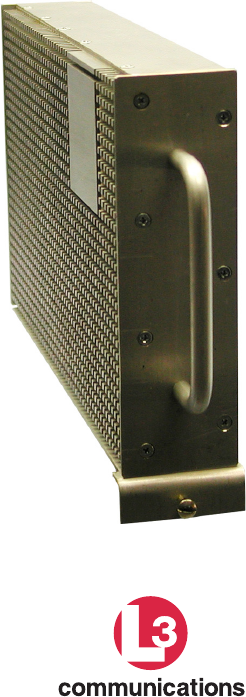L 3 Communications Avionics Systems ADR7050 Avionics VHF Communications Transceiver User Manual
L-3 Communications, Avionics Systems Avionics VHF Communications Transceiver
User Manual

Pilot’s Guide
for the
Remote Navigation/
Communication Transceiver
Model ADR-7050

ADR-7050 Pilot’s Guide
A
© Copyright 2006
L-3 Communications Avionics Systems, Inc.
The white L3 in a circle design logo is a trademark of L-3 Communications Corporation.
Designed and manufactured in the United States of America by:
L-3 Communications Avionics Systems, Inc.
5353 52nd Street, S.E.
Grand Rapids, MI 49512 USA
(800)253-9525 or (616)949-6600
Fax (616)285-4224
www.L-3com.com/as
Export Notice
This data is provided at no charge, or at cost, to the public and is considered publicly available,
No License Required (NLR) as defined in the Export Administration Regulations (EAR) Part
734.7-11.

i
ADR-7050 Pilot’s Guide
Introduction ................................................................................................................................................... 1
Equipment Description .................................................................................................................................. 1
Com Radio Features ................................................................................................................................ 1
Nav Radio Features .................................................................................................................................. 2
Operating Instructions ................................................................................................................................... 3
Power-Up ................................................................................................................................................ 3
Changing & Swapping Frequencies ........................................................................................................ 3
Changing Volume ................................................................................................................................... 4
Activating Auto Squelch .......................................................................................................................... 4
Filtering the Nav ID ................................................................................................................................ 4
Responding to an ADR-7050 Failure ...................................................................................................... 4
Equipment Limitations .................................................................................................................................. 4
Table of Contents

ADR-7050 Pilot’s Guide 1
Introduction
This guide describes the features and operation of the Remote Navigation/Com-
munication Transceiver, model ADR-7050 from L-3 Communications Avionics
Systems, Inc. The ADR-7050 is controlled by individual cockpit displays. Refer to
your Aircraft Flight Manual Supplement (AFMS) and the documentation supplied
with your cockpit display for detailed instructions. This guide is to be used as an
informational supplement. Users should already be familiar with their AFMS and
the documentation supplied with the cockpit display.
Equipment Description
The ADR-7050 (figure 1) contains one communica-
tion radio and one navigation radio. The nav portion
of the ADR-7050 receives navigational signals and
Morse code IDs from VOR stations as well as from
localizer and glideslope transmitters. The com portion
of the ADR-7050 transmits and receives voice com-
munications.
Com Radio Features
• Communication transmission and receiving capabili-
ties at a specified frequency
• Voice communication in the range of 118.000–
136.9917 MHz with 25 kHz or 8.33 kHz channel
spacing
• Frequency monitor function (listens to the standby
frequency while monitoring the active frequency)
Figure 1. ADR-7050
Remote Navigation/
Communication Tranceiver
Model ADR-7050

ADR-7050 Pilot’s Guide
2
• Adjustable volume control
• Intercom function that enables the pilot and copilot to communicate with each
other via their headphones without speaker output. This function is only used if
the aircraft’s audio panel does not have an intercom function.
• Auto squelch function with manual override. The ADR-7050’s auto squelch fea-
ture sets a radio noise threshold to silence unwanted noise. The auto squelch level
is set using a maintenance computer. Anything below the set threshold is silenced.
When squelch is deactivated by the pilot, he will hear noise if no signal is pres-
ent on the tuned channel. The ADR-7050 provides indication if the squelch is
broken.
• Stuck mic condition indication. The ADR-7050 detects a stuck microphone
switch if the Push To Talk (PTT) switch is active for more than 35 seconds. If
the switch is stuck, the switch becomes unusable.
The com radio’s volume, squelch setting, sidetone levels, channel spacing and
squelch threshold can be set by the flight system.
NOTE
All ADR-7050 functions are controlled through various Multi-Func-
tion Displays (MFDs). Refer to the AFMS and specific documentation
supplied with your cockpit displays for more detailed instructions.
Nav Radio Features
• VOR receiver operation in the range of 108.00–117.95 MHz in 50 kHz incre-
ments
• Localizer receiver operation in the range of 108.00–111.95 MHz
• Glideslope receiver operation in the range of 329.150–335.00 MHz
• Adjustable volume control
• Nav ID Filtering. When the filter is on, any voice-over is silenced and only the
Morse code identifier is heard. The ADR-7050 decodes the Morse code IDs from
the tuned localizer or VOR stations and sends the alphanumeric station IDs to be
displayed.
VOR, Localizer, & Glideslope Receivers
The nav radio also provides VOR, localizer and glide slope signals to the flight sys-
tem. When in the VOR mode, you can enter an OmniBearing Select (OBS) setting
through the flight system. The VOR receiver determines the appropriate Course
Deviation Indicator (CDI) output to send back to the flight system based on the
received signal and the OBS input. The VOR receiver also outputs the nav audio
signal and automatically decodes the Morse code identifier from the VOR station.
Equipment Description

ADR-7050 Pilot’s Guide 3
The localizer receiver is tuned when an appropriate localizer frequency is selected on
the nav radio. The localizer receiver outputs the appropriate CDI signal to the flight
system based on where the aircraft is, relative to the center line of the runway. The
localizer receiver also outputs the nav audio signal and automatically decodes the
Morse code identifier from the localizer station.
The glide slope receiver is automatically activated whenever the nav receiver is
tuned to a localizer frequency. The glide slope receiver outputs the appropriate
Glide Slope Indicator (GSI) signal to the flight system based on the aircraft posi-
tion relative to the fixed glide slope of the Instrument Landing System (ILS).
Operating Instructions
NOTE
All ADR-7050 functions are controlled through various Multi-Func-
tion Displays (MFDs). Refer to the AFMS and specific documentation
supplied with your cockpit displays for more detailed instructions.
Power-Up
At power-up, the ADR-7050 performs a power-up self test. The self test ensures
that all major ADR-7050 functions, memory, and microprocessor are operating
properly.
Changing & Swapping Frequencies
To change an active frequency, you must first edit the standby frequency. After edit-
ing the standby frequency, swap the standby frequency with the active frequency.
Once swapped, the standby frequency is immediately and automatically tuned on
the radio and becomes the new active frequency. The former active frequency be-
comes the standby frequency.
1. Select the desired com or nav radio.
2. Increase or decrease the radio frequency value using the associated
flight display controls.
1. Select the desired com or nav radio.
2. Edit the standby frequency.
3. Swap the standby frequency with the active frequency using the as-
sociated flight display controls.
Once swapped, the standby frequency becomes the active frequency and the
To Edit a Radio Frequency:To Edit a Radio Frequency:
To Swap a Radio Frequency:To Swap a Radio Frequency:
Operating Instructions

ADR-7050 Pilot’s Guide
4
active frequency becomes the standby frequency.
Changing Volume
1. Select the desired com or nav radio.
2. Operate the volume control using the associated flight display con-
trols.
Activating Auto Squelch
1. Select the desired com radio.
2. Activate/deactivate auto squelch using the associated flight display
controls.
Filtering the Nav ID
1. Select the desired nav radio.
2. Turn the ID filter function “on” to silence voice-over or turn the ID
filter function “off” to hear the voice-over and Morse code using the
using the associated flight display controls.
Responding to an ADR-7050 Failure
If the ADR-7050 detects a non-fatal failure, only the affected com and/or nav radio
functions will cease to operate. If a fatal fault occurs, all radio functions will cease
to operate.
1. Do nothing. See a maintenance technician.
1. Reset the circuit breakers.
Equipment Limitations
None.
To Change Radio Volume:To Change Radio Volume:
To Activate/Deactivate Auto Squelch:To Activate/Deactivate Auto Squelch:
To Filter the Nav ID:To Filter the Nav ID:
What To Do if the ADR-7050 Fails:What To Do if the ADR-7050 Fails:
What To Do if the ADR-7050 Fails Intermittently:What To Do if the ADR-7050 Fails Intermittently:
Equipment Limitations

0040-21454-01 (Rev. A, 5/15/06)
L-3 Communications Avionics Systems, Inc.
5353 52nd Street, S.E.
Grand Rapids, MI 49512 USA
(800)253-9525
www.L-3com.com/as
ADR-7050